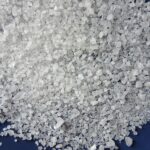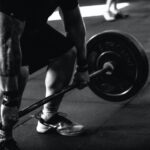
Weight lifting is a great way to achieve your goals if you’re also looking to build lean muscle mass and lose fat. Weight lifting burns calories, builds muscle, and boosts metabolism. But how many calories do you burn lifting weights, and how can you maximize the calorie burn during your workouts?
Table of Contents (click to expand)
Introduction
Weight lifting, also known as weight training or resistance training, involves using free weights, weight machines, or your body weight to build strength and endurance. While weight lifting is often associated with building muscle mass, it can also effectively burn calories and lose weight.
In this article, we will explore the science of calorie burn during weight lifting, the benefits of weight lifting for calorie burn, the different types of weight lifting exercises and how they impact calorie burn, and how to maximize calorie burn during your weight lifting workouts.
We will also cover the importance of proper nutrition for weightlifting and debunk common myths about weightlifting and calorie burn.
Related: What Does Lifting Weights Do?
The Science of Calorie Burn During Weight Lifting
The process of burning calories during weightlifting is influenced by several factors, giving it a rather dynamic nature. Understanding these elements can help optimize your workouts for effective calorie expenditure and shed light on how different weightlifting strategies can lead to varying energy outputs.
Weight, Intensity, and Repetitions
The weight lifted, the intensity of the workout, and the number of repetitions performed significantly affect calorie burn. It’s a common misconception that heavier weights are always better for burning calories.
However, lifting lighter weights at a higher number of repetitions can also be effective in burning calories, as it requires sustained muscle activity, which results in an increased metabolic rate. Similarly, the intensity of the weightlifting workout plays a critical role. A high-intensity weightlifting session, often characterized by short rest periods and high exertion, can increase the overall calorie burn.
Related: At what Age Should You Start Lifting Weights
Role of Muscle Mass
The amount of muscle mass involved in an exercise significantly impacts calorie burn. Muscles are metabolically active tissues that require energy (calories) to function. The more muscle groups engaged in an activity, the higher the energy expenditure.
Compound exercises such as squats, deadlifts, and bench presses engage multiple major muscle groups simultaneously, resulting in a higher calorie burn than isolated exercises like bicep curls or tricep extensions, which target individual muscle groups.
High-Intensity Interval Training (HIIT)
High-Intensity Interval Training (HIIT) involves brief bursts of high-intensity exercise followed by short rest or low-intensity exercise periods. The beauty of HIIT is that it can be incorporated into weightlifting routines to maximize calorie burn.
By alternating between high-intensity weightlifting exercises and short rest periods, you can maintain a high heart rate, leading to increased calorie burn not just during the workout but also for hours afterward, a phenomenon known as the afterburn effect or excess post-exercise oxygen consumption (EPOC).
Post-Exercise Metabolic Boost
Weightlifting, particularly at high intensities, results in a post-exercise metabolic boost. This effect is due to the body’s need to repair muscle fibers and replenish energy stores (like glycogen) after a strenuous workout. The result is a high-calorie burn even after the training ends so weightlifting can be an effective tool for weight management and body composition improvement.
The Benefits of Weight Lifting for Calorie Burn
Weight lifting isn’t just about building muscle and strength; it also offers significant benefits for calorie burn and overall metabolic health. This type of exercise challenges the body in unique ways, resulting in an immediate calorie burn and long-term metabolic enhancements.
Post-Workout Metabolism Boost
One of the critical benefits of weightlifting is its impact on post-workout metabolism. This occurs because your body requires additional energy to repair and rebuild muscle fibers stressed during weight lifting.
Additionally, replenishing the energy stores depleted during your workout requires further energy expenditure. As a result, your body continues to burn calories at an elevated rate for several hours after your vigorous weightlifting session – a phenomenon often referred to as ‘afterburn’ or excess post-exercise oxygen consumption (EPOC).
Related: When Can Kids Start Lifting Weights: A Comprehensive Guide
Building Lean Muscle Mass
Weight lifting is one of the most effective ways to build lean muscle mass. This is crucial because muscle tissue requires more calories to maintain than fat tissue. The more muscle mass you have, the higher your resting metabolic rate becomes, meaning you’ll burn more calories even while at rest. This change in body composition can dramatically affect your overall metabolic health and calorie-burning potential.
Preservation of Muscle Mass and Burning Fat
While aerobic exercises such as running or cycling are excellent for cardiovascular health and calorie burn during the activity, weight lifting offers a unique advantage in preserving muscle mass while promoting fat loss.
By providing resistance for your muscles to work against, weight lifting forces your body to utilize fat stores for energy, promoting a healthier body composition. This benefit is increasingly important as we age, given the natural tendency for muscle mass to decrease over time, a process known as sarcopenia.
Scientific Studies on Weight Lifting and Calorie Burn
Several scientific studies support these benefits of weight lifting. A study published in The Journal of Strength and Conditioning Research found that women who engaged in weight training three times a week for 16 weeks lost an average of four pounds of body fat while gaining nearly two pounds of muscle. This indicates a significant body composition shift favoring lean muscle mass over fat.
Moreover, a study published in the International Journal of Sports Nutrition and Exercise Metabolism found that men who performed resistance training burned more calories in the 24 hours following their workout than those who engaged in aerobic exercise. This research highlights the powerful effect of weight lifting on post-exercise metabolism and calorie burn.
Calorie Burn by Type of Weight Lifting Exercise
The type of weightlifting exercises you choose can significantly impact your calorie burn. Various activities offer unique benefits and energy expenditure, primarily influenced by the muscles they engage and the intensity required to perform them.
Related: What to Eat After Lifting Weights
Compound vs. Isolation Exercises
The weightlifting world is typically divided into two primary exercise categories: compound and isolation.
Compound exercises are movements that involve multiple joints and muscle groups working together. These include exercises like squats, deadlifts, bench presses, and pull-ups. Due to the large muscle mass involved in these movements, they are highly effective at burning calories. Compound exercises require more energy and stimulate an enormous metabolic response due to the necessary muscle repair and rebuilding.
On the other hand, isolation exercises target a single muscle group and involve only one joint movement. Examples include bicep curls, tricep extensions, and calf raises. While these exercises are essential for targeting specific muscles and improving muscle balance, they generally burn fewer calories than compound exercises due to the smaller muscle mass involved.
Influence of Weight and Repetitions
The amount of weight lifted and the number of repetitions performed also play a crucial role in determining calorie burn during strength training. Lifting heavier weights for fewer reps, often termed ‘strength training,’ is typically associated with higher energy expenditure during the workout. This is because heavy weights demand a high level of exertion from your muscles, increasing the overall intensity of the exercise.
However, lifting lighter weights for more reps, commonly called ‘endurance training,’ can also contribute to significant calorie burn. This method keeps your muscles under tension for longer, resulting in sustained energy expenditure. Additionally, this approach often leads to a prolonged ‘afterburn’ effect, where your body continues to burn calories post-workout as it recovers and rebuilds muscle tissue.
How to Maximize Calorie Burn During Weight Lifting
To maximize calorie burn during weight lifting, it’s important to choose exercises that engage multiple muscle groups and to lift heavy weights with low reps. Adding circuits or supersets to your workout routine can also increase calorie burn by keeping your heart rate up.
Proper form is also key to maximizing calorie burn during weight lifting. If you’re not using the correct form, you may not engage all of the muscle groups you intended to, which can reduce the number of calories burned. Working with a certified personal trainer or watching instructional videos to learn the proper form for each exercise is essential.
Fueling Your Body During Weight-Lifting Workouts
Proper nutrition is essential for maximizing calorie burn and building lean muscle mass during weight lifting. Fueling your body with protein, carbohydrates, and healthy fats before and after your workout is essential.
Pre-workout meals should be high in carbohydrates and low in fat to give you the energy you need to lift weights. Post-workout meals should include protein to help repair and rebuild muscle tissue. Lean protein sources like chicken, fish, and tofu are ideal for muscle growth and recovery.
Common Myths About Calorie Burn and Weight Lifting
One common weightlifting myth is that it will make women too bulky. This is false – women do not have enough testosterone to build large muscles as men do. Instead, weight lifting can help women build lean muscle mass and increase metabolism, leading to fat loss and a more toned appearance.
Another myth is that cardio is the best way to lose weight. While cardio exercises like running or cycling can effectively burn calories, they do not build muscle mass like weight lifting. Incorporating cardio and strength training into your exercise regimen can be the most effective way to make weightlifting burn calories and build muscle.
Frequently Asked Questions
How Do I Calculate Calories Burned Lifting Weights?
Calculating the number of calories burned while lifting weights can be tricky, as it depends on several variables, such as weight, muscle mass, workout intensity, and Duration. However, many fitness watches and apps provide an estimate. If you prefer to calculate it manually, you can use a MET (Metabolic Equivalent of Task) value for weightlifting, typically around 6 for general weight training. Here’s a rough formula:
Calories burned = Duration of activity in hours x MET x weight in kg
For example, if you weigh 70kg and perform weightlifting for 1 hour, you would burn approximately 420 calories (1 hour x 6 MET x 70 kg = 420+ calories burnt).
Can You Burn 500 Calories Lifting Weights?
It’s possible to burn 500 calories by lifting weights, but it would require a long, intense workout. The number of calories burned depends on the Duration of the training, the intensity of the exercise, and the individual’s body weight. Lifting weights, someone who weighs more or activities at a higher power would burn more calories.
How Many Calories Does 1 Hour of Weightlifting Burn?
On average, a general weightlifting session can burn between 180 to 266 calories in an hour for someone who weighs 155 pounds, according to the Harvard Medical School. However, this can significantly vary depending on the intensity of the workout, the individual’s body weight, and their muscle mass. A more intense weightlifting session can burn considerably more calories.
Can I Lose Weight by Lifting Weights Only?
Yes, you can lose weight by lifting weights. Weightlifting can be because of calories burned. Weight lifting can help you build muscle, and muscle tissue burns more calories at rest than fat tissue. This means that by increasing your muscle mass through weightlifting, you can improve your basal metabolic rate (the number of calories your body burns at rest), helping you to lose weight.
However, weight loss ultimately comes down to a calorie deficit, meaning you must burn more calories than you consume. Therefore, while lifting weights can contribute to this deficit, your diet also plays a crucial role.
A balanced diet with a controlled calorie intake is usually necessary for weight loss, even with regular weightlifting. Furthermore, including some form of cardiovascular exercise in your fitness regimen could help create a more significant calorie deficit, potentially leading to faster weight loss.
Related: How to Make Ginger Shots for Weight Loss
Conclusion
Weight lifting is a great way to burn calories, build muscle, and increase metabolism. By choosing the right exercises, lifting heavy weights with low reps, and focusing on proper form, you can maximize calorie burn maximize muscle growth during your weightlifting workouts.
Incorporating weight lifting into your exercise regimen can also lead to other health benefits, such as increased bone density and improved body composition. By building lean muscle mass, you can achieve a more toned appearance and maintain a healthy weight.
Remember to fuel your body with proper nutrition before and after your weight lifting and cardio workouts, and incorporate both cardio and strength training into your exercise routine. With dedication and consistent effort, you can achieve weight loss and muscle gain goals through weight lifting and calorie burn.
Thank you for reading this comprehensive guide on how many calories you burn by lifting light weights. We hope you found it informative and helpful in achieving your fitness goals.


































